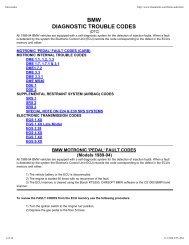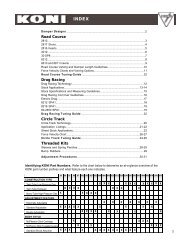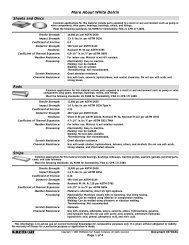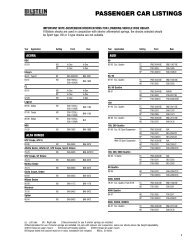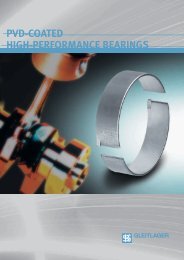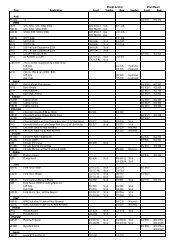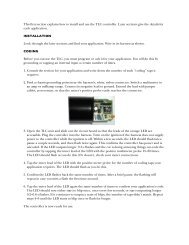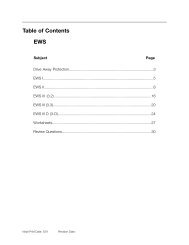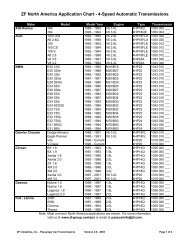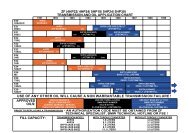Table Of Contents
Table Of Contents
Table Of Contents
Create successful ePaper yourself
Turn your PDF publications into a flip-book with our unique Google optimized e-Paper software.
• Fuel Tank Capacity must be between 15 and 85% (safe approximation between 1/4 -<br />
3/4 of a tank).<br />
• Ambient Air Temperature between -7 O C & 35 O C (20 O F & 95 O F )<br />
• Altitude < 2500m (8,202 feet).<br />
• Battery Voltage between 11.5 and 14.5 Volts<br />
When these criteria are satisfied every second time, the ECM will start the Fuel System<br />
Leak Diagnosis Test. The test will typically be carried out once a day ie:, once after driving<br />
to work in the morning, when driving home in the evening, the criteria are once again met<br />
but the test is not initiated. The following morning, the test will run again.<br />
PHASE 1 - REFERENCE MEASUREMENT<br />
The ECM activates the pump motor. The pump pulls air from the filtered air inlet and passes<br />
it through a precise 1.0 mm reference orifice in the pump assembly.<br />
The ECM simultaneously monitors the pump motor current flow. The motor current raises<br />
quickly and levels off (stabilizes) due to the orifice restriction. The ECM stores the stabilized<br />
amperage value in memory. The stored amperage value is the electrical equivalent of a 1.0<br />
mm (0.040”) leak.<br />
PHASE 2 - LEAK DETECTION<br />
The ECM energizes the Change Over Valve allowing the pressurized air to enter the fuel<br />
system through the Charcoal Canister. The ECM monitors the current flow and compares<br />
it with the stored reference measurement over a duration of time.<br />
Once the test is concluded, the ECM stops the pump motor and immediately de-energizes<br />
the change over valve. This allows the stored pressure to vent thorough the charcoal canister<br />
trapping hydrocarbon vapor and venting air to atmosphere through the filter.<br />
71<br />
MS S54 Emissions Management



